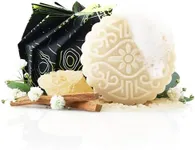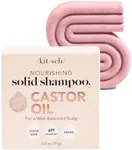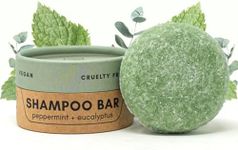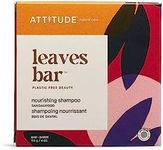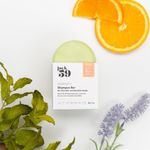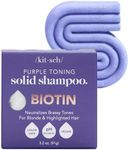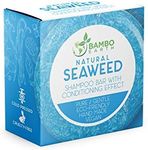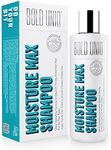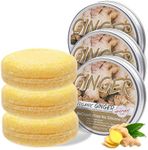Buying Guide for the Best Shampoo Bars
Choosing the right shampoo bar can make a big difference in your hair care routine. Shampoo bars are a solid alternative to liquid shampoos, offering eco-friendly packaging and often lasting longer. The key to finding the best shampoo bar for you is to consider your hair type, scalp needs, and any sensitivities you may have. Understanding the main features and ingredients will help you select a bar that keeps your hair healthy, clean, and manageable.Hair Type CompatibilityHair type compatibility refers to whether a shampoo bar is formulated for oily, dry, normal, curly, or color-treated hair. This is important because different hair types have unique needs; for example, dry hair benefits from extra moisture, while oily hair needs a formula that helps control excess oil. Shampoo bars are often labeled for specific hair types, so look for one that matches your own. If you have curly or color-treated hair, seek bars that mention hydration or color protection. For normal or fine hair, a gentle, balanced formula is usually best.
IngredientsIngredients are the substances used to make the shampoo bar, and they play a big role in how the bar affects your hair and scalp. Natural oils, butters, and essential oils are common in many bars, while some may include synthetic fragrances or preservatives. If you have sensitive skin or allergies, look for bars with simple, natural ingredients and avoid those with sulfates, parabens, or artificial fragrances. If you want extra nourishment, choose bars with ingredients like shea butter or argan oil. Always check the ingredient list to ensure it aligns with your personal preferences and needs.
Cleansing StrengthCleansing strength describes how effectively the shampoo bar removes dirt, oil, and buildup from your hair and scalp. Some bars are very gentle and suitable for daily use, while others are more powerful and better for occasional deep cleaning. If you wash your hair frequently or have a sensitive scalp, a mild bar is ideal. For those who use a lot of styling products or have oily hair, a stronger cleansing bar may be necessary. Consider your washing habits and scalp condition when choosing the right cleansing strength.
Moisturizing PropertiesMoisturizing properties refer to how well the shampoo bar hydrates your hair and scalp. This is especially important for people with dry, curly, or damaged hair, as these hair types need extra moisture to stay healthy. Bars with added oils and butters provide more hydration, while those with fewer moisturizing ingredients are better for oily hair. Think about how your hair feels after washing—if it often feels dry or frizzy, look for a bar with strong moisturizing benefits.
ScentScent is the fragrance of the shampoo bar, which can range from floral and fruity to herbal or unscented. While scent doesn't affect cleaning ability, it can make your hair washing experience more enjoyable. If you are sensitive to smells or have allergies, choose an unscented or lightly scented bar. If you enjoy a particular fragrance, look for bars that use natural essential oils for scent rather than artificial perfumes.
LatherLather refers to how much foam the shampoo bar produces when used. Some people prefer a rich, bubbly lather, while others are comfortable with a low-foam bar. Lather can affect how easy it is to spread the shampoo through your hair. If you have thick or long hair, a bar that lathers well can make washing easier. If you have short or fine hair, lather may be less important. Try to match your preference for lather with the bar you choose.
Eco-FriendlinessEco-friendliness covers how sustainable and environmentally friendly the shampoo bar is, including packaging and ingredients. Many people choose shampoo bars to reduce plastic waste, so look for bars with minimal or compostable packaging. Also, consider whether the ingredients are biodegradable and ethically sourced. If environmental impact is important to you, prioritize bars that highlight their eco-friendly credentials.
